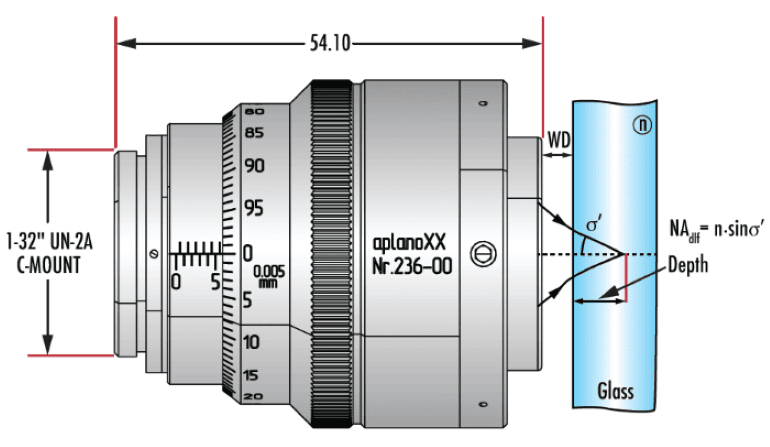
AdlOptica aplanoXX Aplan Objectives compensate for spherical aberration and coma when focusing into glass, sapphire, silicon carbide, silicon, PMMA, and other transparent materials at depths up to 4mm. These objectives are designed to be used with ultrafast solid-state and fiber lasers and are optimized for 800nm (Ti:sapphire) and 1030nm (Yb:doped). Featuring C-Mount threading and an optical design insensitive to misalignment, these objectives are easy to integrate into laser systems. AdlOptica aplanoXX Aplan Objectives are ideal for micromachining glass, 3D nanofabrication, waveguide recording, and selective laser etching. A collar on the objective allows for manual adjustment of focus and a replaceable front window protects from debris during materials processing.

| Title | Compare | Stock Number | Price | Buy | |
|---|---|---|---|---|---|
| Replacement Window for 515/1030nm foXXus and aplanoXX Objectives | #19-493 | €99,00 Request Quote |
|
||
| Replacement Unmounted Window for 800nm, 0.80 NA, aplanoXX Aplan Objective | #19-494 | €99,00 Request Quote |
|
||
| Mounted Window for 1030nm, 0.80 NA, aplanoXX Aplan Objective | #19-495 | €307,00 Request Quote |
|
||
| Mounted Window for 800nm, 0.80 NA, aplanoXX Aplan Objective | #19-496 | €307,00 Request Quote |
|
||
| Spanner Wrench for aplanoXX Aplan Objective | #19-497 | €99,00 Request Quote |
|
1-800-363-1992
or view regional numbers
QUOTE TOOL
enter stock numbers to begin
Copyright 2025 | Edmund Optics, Ltd Unit 1, Opus Avenue, Nether Poppleton, York, YO26 6BL, UK
California Consumer Privacy Acts (CCPA): Do Not Sell or Share My Personal Information
California Transparency in Supply Chains Act